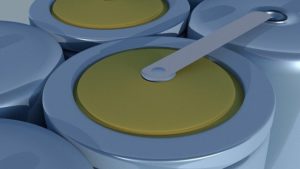APPLICATION OF TECHNOLOGY:
- Lithium-ion batteries (LIBs)
BENEFITS:
- High energy density
- Cost-effective
- Scalable
- Co-free and Ni-free
- Excellent rate capability and cycling stability
BACKGROUND:
- Currently, layered oxides are the most popular choices for high energy LIB cathodes. Alternative cathode materials may provide further improvements to this technology. Due to their Co- and Ni-free chemistry as well as high energy density (> 1000 Wh/kg), lithium-rich cation-disordered rocksalts are promising.
TECHNOLOGY OVERVIEW:
Researchers at Berkeley Lab have developed a novel cost-effective fluorination method to synthesize high-energy lithium-rich rocksalt oxyfluoride cathode materials for lithium-ion batteries (LIBs).
The present cathode materials demonstrate an impressive rate capability, with the ability to maintain a high capacity of over 120 mAh/g even at a very high density of 400 mA/g. This is notably one of the best performances obtained on this class of materials thus far.
This technology takes advantage of the thermally stable and cost-effective Mn redox, and is suitable as the next-generation of LIB cathodes with higher energy and power densities, improved cycling stability and safety, and reduced cost. Ultimately, it addresses the demand for the development of new cathode chemistry alternatives to the layered oxides.
DEVELOPMENT STAGE: Proven principle
PRINCIPAL INVESTIGATORS:
STATUS: Patent pending.
FOR MORE INFORMATION:
Ahn, J., Chen, D., Chen, G.. A Fluorination Method for Improving Cation-Disordered Rocksalt Cathode Performance, Advanced Energy Materials, https://doi.org/10.1002/aenm.202001671
OPPORTUNITIES: Optioned for certain Fields of Uses. Parties interested in licensing or collaborative research should contact ipo@lbl.gov.
